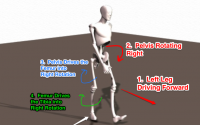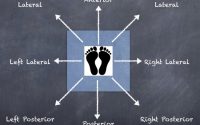3 Dimensional Movement
This is so important! It’s easy to forget too, I catch myself falling into old habits and just doing sagittal lunges or something like that. It’s a little frustrating, because it’s no harder to teach the 3D variations!
So what does it mean to use 3 Dimensional exercises? Well, I guess to me it means deliberately emphasising each of the three planes of motion. If we stick with the lunge as an example, you’d have a sagittal lunge, a lateral lunge and a rotational lunge. Or it could be something like altering the foot positions in a squat to challenge the movement in a different way.
The longer I practise the more I’m looking to create a few key things to help my patients. I want them to have confidence in their body and their ability to move. I want them to have a physical robustness that allows them to do the things they want to do.
3 Dimensional movement also come in handy when assessing and building exercises. If a patient has a real fear around a certain movement pattern, you can often work your way around the fear by creating exercises that look different, but create the desired joint motions. Again, one of my primary goals is to build the patients confidence in their ability and moving pain free really builds confidence.
I think a lot of exercises that are common are very single plane dominant. It’s not that they are bad exercises, it’s just that they are not the whole picture. Thinking through the 3D strategy will help you exploit the best possible outcome from your exercise therapy.
If you adopt the principle of 3D movement for your patients and consistently drive 3D motion you will automatically be achieving the other 2 principles of system flexibility and joint relationships. Lets use a simple example of 3D lunges. If you lunge in all 3 planes the body will have to take advantage of the joint relationships due to it being a dynamic, whole body set of movements.
Also, while the body is solving the ‘movement puzzle’ it will be encouraged to move in different ways and be successful with the variety of lunges. This requires and encourages system flexibility and is a great approach for building robust and dynamic patients.
Physioblogger

